The 2024 edition of the Venice Art Biennale takes place from April 20 until November 24. Curator Adriano Pedrosa has entitled this 60th International Art Exhibition ‘Foreigners Everywhere – Stranieri Ovunque’. This expression has several meanings. First of all, that wherever you go and wherever you are you will always encounter foreigners – they/we are everywhere. Secondly, that no matter where you find yourself, you are always truly, and deep down inside, a foreigner. You can read more about Adriano Pedrosa and the theme of this Art Biennale in my post ‘What to expect from the Art Biennale 2024‘.
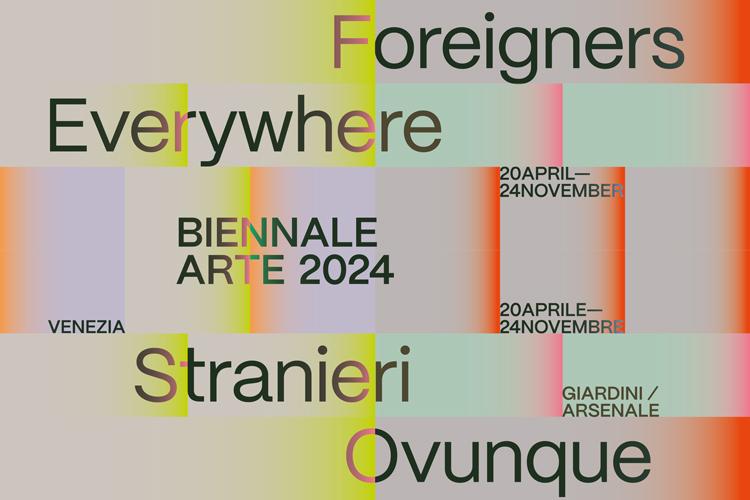
The event is spread across two main locations (Giardini and Arsenale) and different venues in and around Venice. With the ‘Foreigners Everywhere – Stranieri Ovunque’ exhibition, the huge number of national pavilions, collateral events and plenty of coinciding exhibitions, the Art Biennale can be overwhelming. Unless you have the luxury to dedicate a full week to the Art Biennale, you will have to make some choices.
This post will help you prepare your visit to the Art Biennale and to decide which parts are most interesting for you.
Tickets
There are different types of entrance tickets, so you have to check upfront which ticket fits your needs. The price of a regular ticket is 30 euros, which I think is still relatively cheap considering the size of the exhibition. This ticket allows one entrance to Giardini and one to Arsenale. You are allowed to visit these sites on two different days, which don’t have to be consecutive. If you prefer more flexibility about the number of times you can enter each site, you can take a multiple access ticket (40 euros for mulitple visits during 3 consecutive days, or 50 euros for one week) or an accreditation ticket (unlimited access, 75 euros). There are also several reductions possible (e.g. children, over 65, residents of Venice, groups). For your information, you don’t need tickets for most of the national pavilions and collateral events which are located outside Giardini and Arsenale.
I recommend to buy your regular ticket online on the website of La Biennale di Venezia. This will save you time as the queues can be rather long on the busy days. If you buy a multiple acces ticket or an accreditation ticket, you will have to show a valid ID each time you enter, so don’t forget to take it with you. Alternatively, buy your ticket for the Art Biennale in the afternoon on the day before your visit, when the ticketing booths are desolate.
You can also buy a Biennale Card and become a member of La Biennale. You can choose between 5 different types of cards: Young Adult (65 euros), Silver (80 euros), Gold (450 euros), Platinum (900 euros), and Diamond (3,000 euros). The Silver card entitles you to 2 admissions to the Art Biennale, a discount on the accreditation ticket, discounts to the dance, music and theatre events of the Biennale and to the Venice Film Festival and 10% discount on purchases at the Biennale Bookshops. The revenue from the sale of Biennale Cards will be used to support the activities of the Historical Archives of Contemporary Arts and part of it will be allocated to the Carbon Neutrality project undertaken by La Biennale di Venezia since 2021.
While booking your tickets for the Biennale online, take your time to either pay your ‘Venice access fee’ to the city (5 euros for one day visitors) or register and ask for an exemption if you are staying overnight in Venice. The fee is only due on a limited number of days: April 25 to May 5, weekends in May and June – excluding the Festa della Repubblica weekend (June 1-2) – and the first two weekends of July. The registration can be done on the site of Venezia Unica.
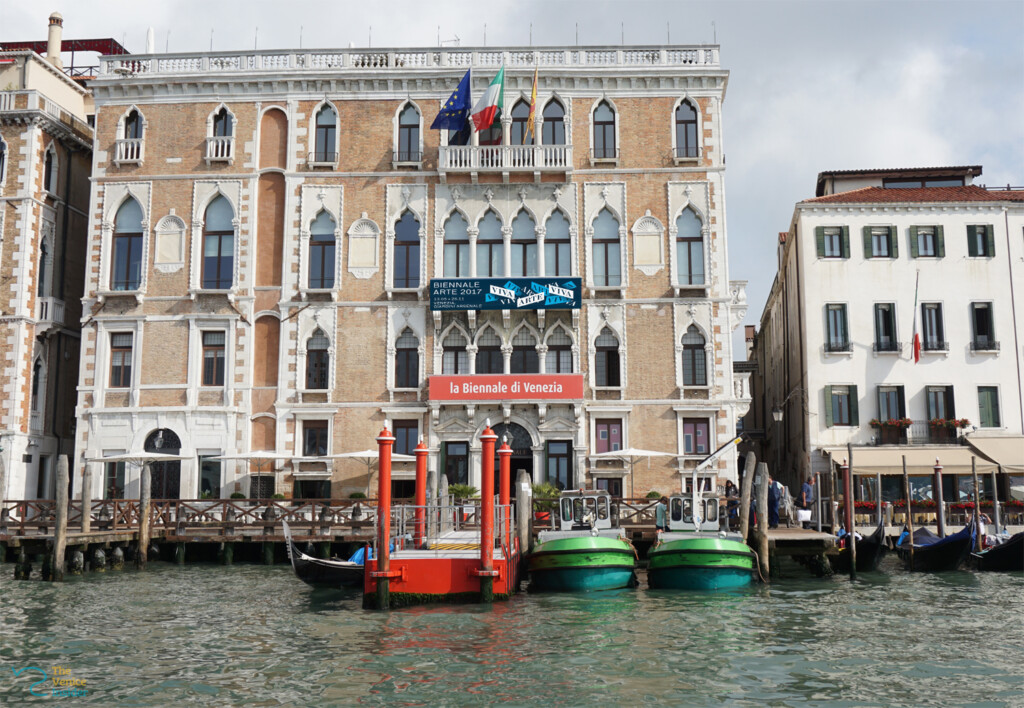
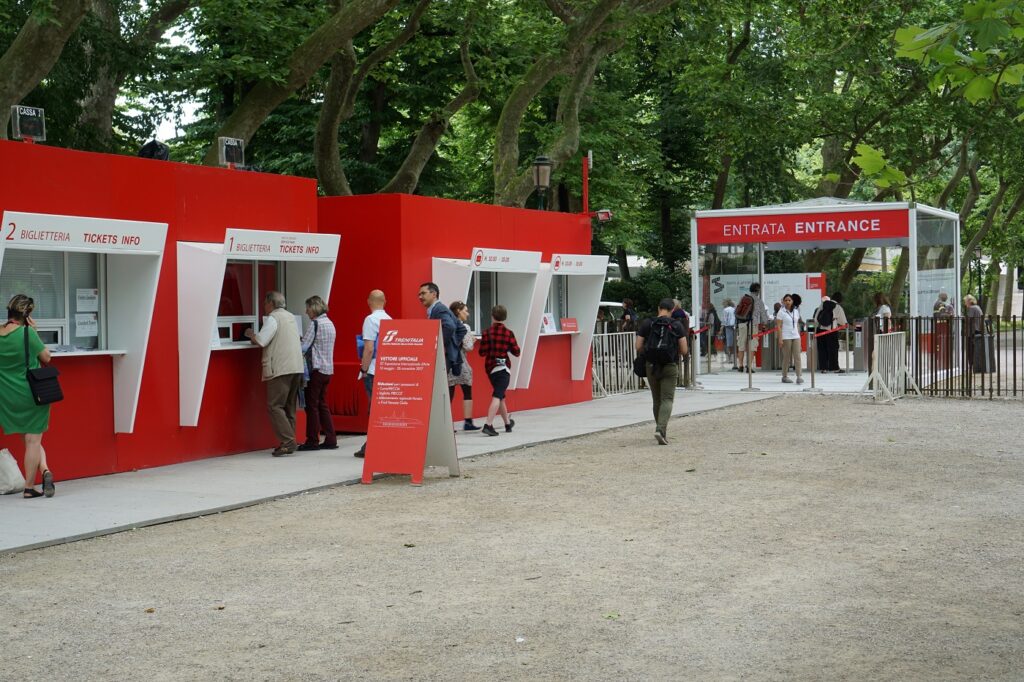
Which day?
Once you decided how much time you will dedicate to each site, you have to choose on which day you want to visit Giardini and Arsenale. Here are some elements which you can take into account.
Monday is usually, with a few exceptions for collateral events in the city, the closing day for all the events of La Biennale. It is however open on the first and last Monday (April 22, November 18) and on July 22, September 2 and September 30.
Weekends and especially prolonged weekends are much more crowded than weekdays. Many Italians tend to visit the event during these periods.
The first week is also very crowded as many journalists stay around after the pre-opening for the press (April 17-19). There are however several performances which only take place during the first week. Hence, you will have to decide whether you want to mingle with the artists, curators and press or if you prefer to have the exhibitions more to yourself.
Finally, the weather is also a determining factor. When it rains, you might prefer to visit Arsenale. In Giardini, you spend more time outside when walking from one pavilion to another. Running around with a wet umbrella is not the best way to visit the Biennale, especially if you want to have a free hand to take pictures.
At what time?
The Art Biennale has now different hours during summer (April 20 until September 30) and fall (October 1 until November 24), so take this into account when planning your visit. In summer, the Biennale opens at 11 AM and closes at 7 PM. There is an exception for the Arsenale, which closes at 8 PM on Fridays and Saturdays. During fall, the Biennale opens at 10AM and closes at 6 PM.
I advise to start your visit as soon as it opens (so either at 11 AM or 10 AM depending on when you visit), especially if you have only one day per site. There is so much to see, that you wouldn’t be the first to realize late afternoon that you have only one hour left for a large part of the exhibition. In case you don’t need the whole day, you can use the remainder of the afternoon to wander around and discover the pavilions and events spread over the city.
In Giardini, the crowds disperse more or less automatically at the entrance. You could however start with the area across the river, as they receive less visitors in the morning. At Arsenale, there is a sort of walking order, but you can also decide to leave the path. Go first to the pavilions at Arsenale Nord or in the Sale d’Armi and return afterwards to the main corridor.
At lunch time, it can be very crowded at the catering points. It’s better to wait until 2 o’clock or let it depend on when you pass one of the eating booths. At Giardini, the one between the German and the Korean pavilion gives you a nice view on the lagoon, but it is rather small.
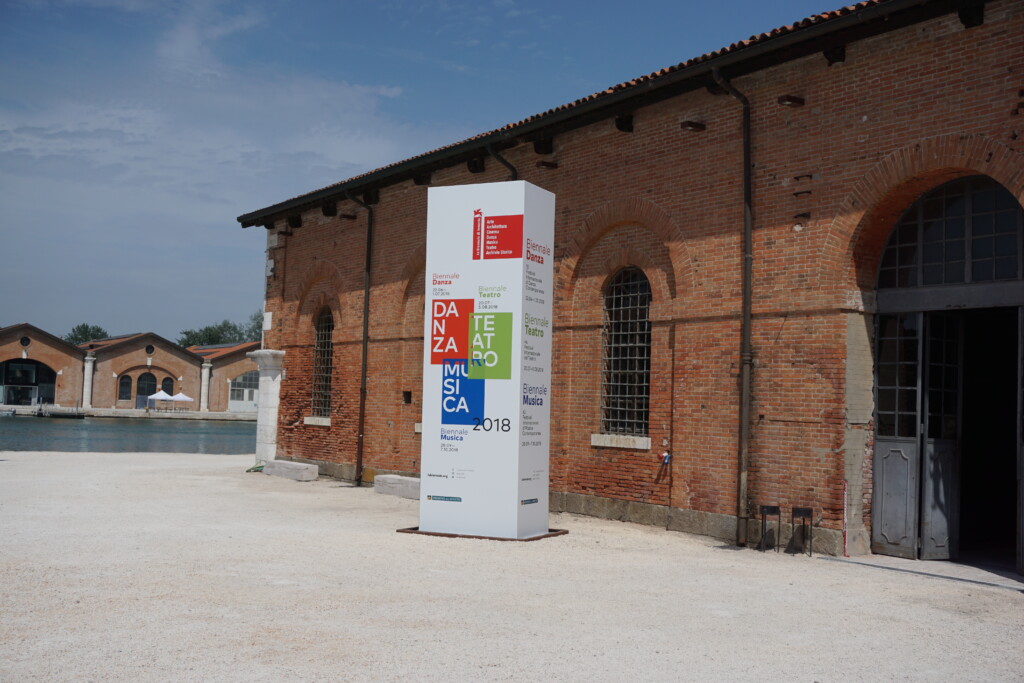
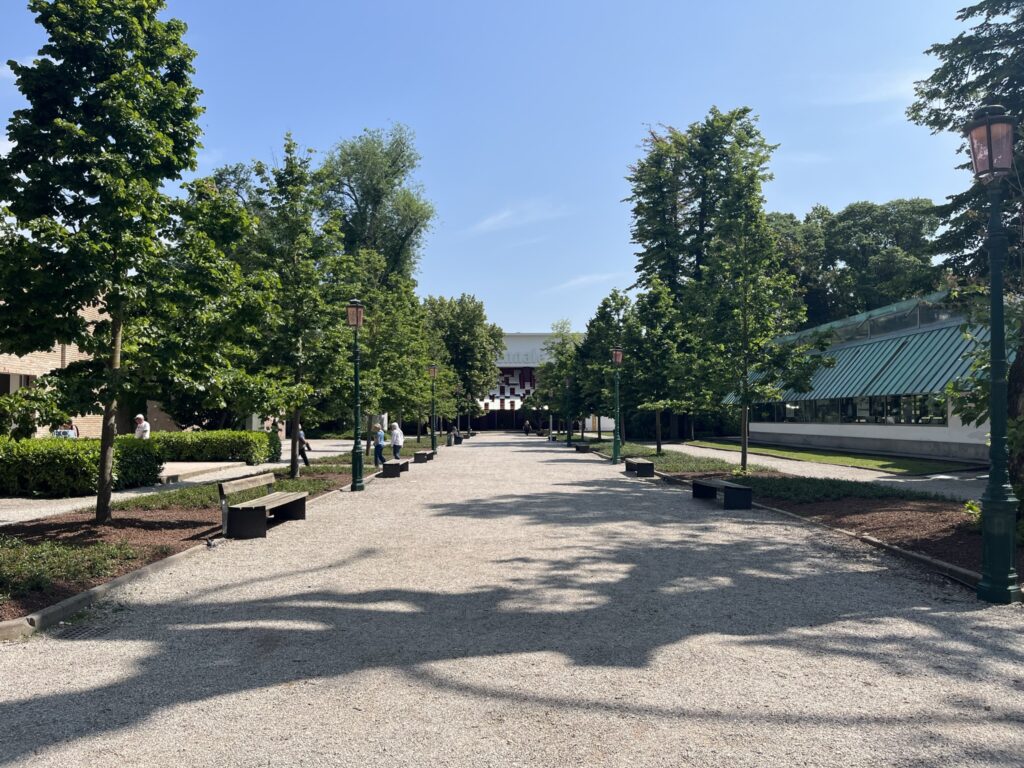
Where?
The majority of the national pavilions are located at the two main locations, Giardini and Arsenale. You can reach these with the vaporetto (more info in my post ‘A practical how-to guide on transportation in Venice‘) and get out at either the Giardini or Arsenale stop. It is a 5 to 10 minutes walk from one site to the other, depending on the route you choose. You can opt for the scenic walk along the lagoon or for the shortcut via Via Garibaldi.
INSIDER TIP: If you are interested in the history and architecture of the pavilions in Giardini, I recommend the book ‘Guide to the pavilions of the Venice Biennale since 1887’ of Marco Maluzzani. You can usually find it at the Biennale bookshops.
There are also several national pavilions, collateral events or coinciding exhibitions spread all over the city. Schedule at least one day for these, as it takes time to go from one place to another. You can download the map upfront if you want to plan your walk and combine it with other sights, shops or restaurants you want to visit in Venice. These locations can be recognized by large signs outside on the street.
Some of these events do not run during the whole Biennale period. Several close on different days or as of September. Make sure to check upfront whether or not they will be open. You don’t want to walk to the other side of the city to find a closed pavilion.
Which pavilions and events?
The Art Biennale brings a wide variety of art works, small and large exhibitions. In combination with the large number of pavilions, you will have to make some choices in line with your preferences and your time availability. I recommend you read about the different participations before your visit, so you know which ones you really want to see. If you also figure out which ones are not at all interesting to you, you can use the remaining time for your ‘I have no clue what this is about’ category. This upfront selection is especially crucial for the locations in the city which can be far from each other, and to a lesser extent for the pavilions in Giardini. At Arsenale, you have to follow more or less a set order so you can adjust your pace instead of choosing where to go first.
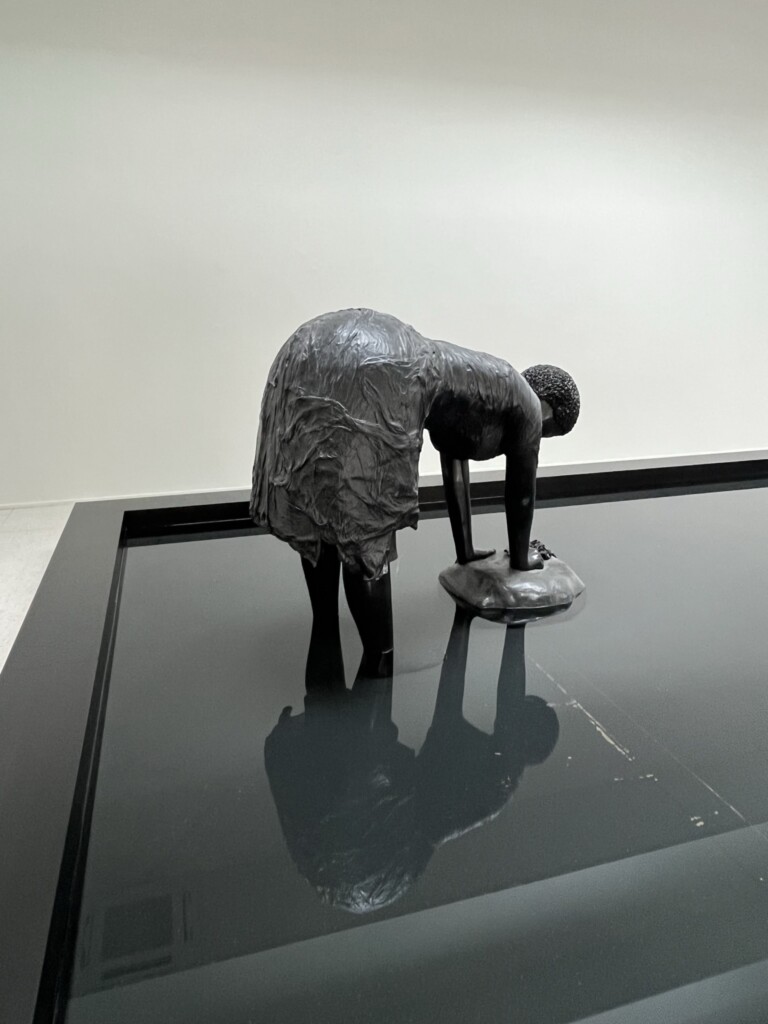
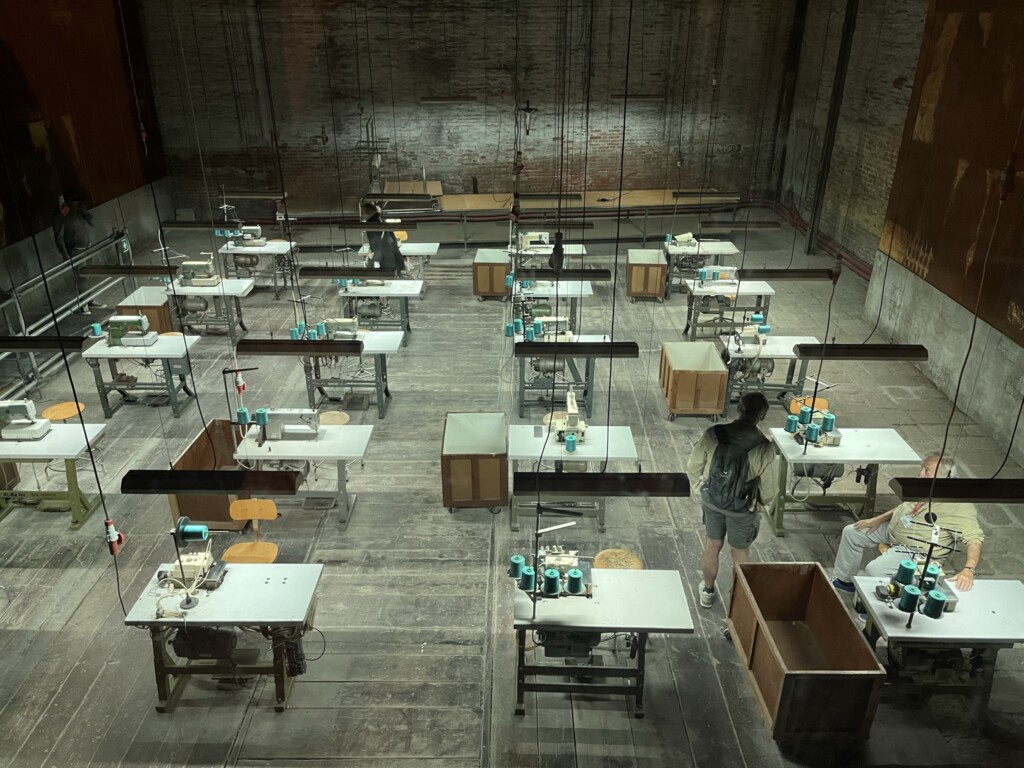
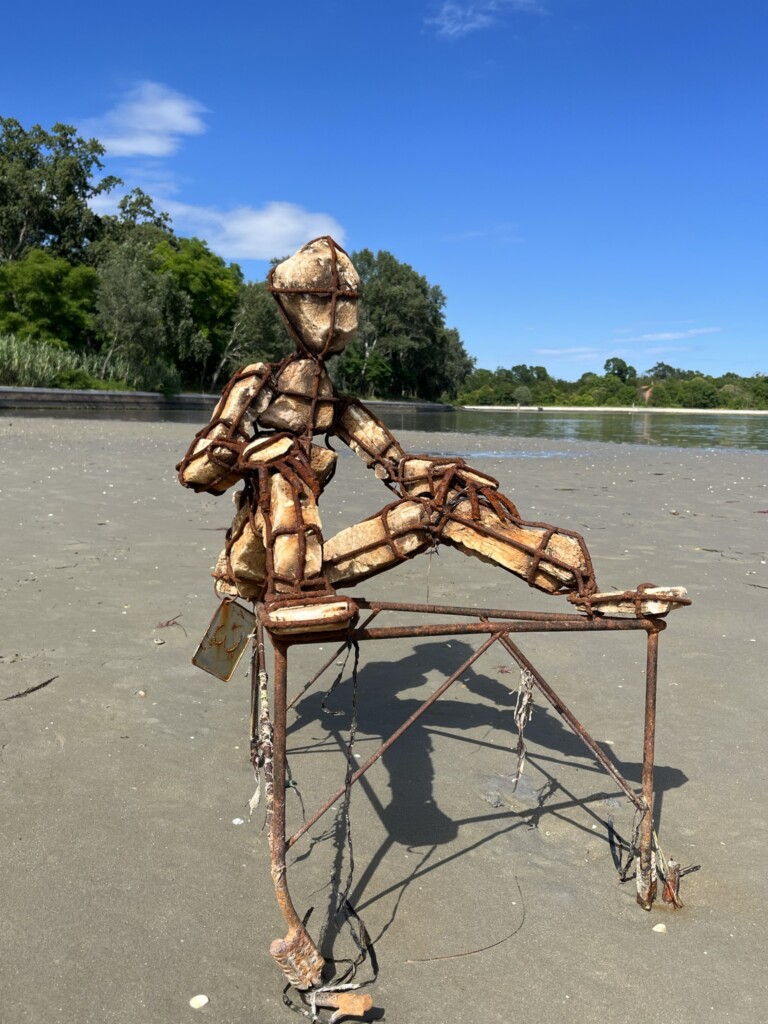
An overview of all the national pavilions and and of the collateral events is available on the website of La Biennale. The coinciding exhibitions have no relationship whatsoever with the official organization, so you will have to consult other sources such as the website of the tourism office Venezia Unica.
INSIDER TIP: I am in the midst of writing a book with tips, must-sees, background information and maps of the Art Biennale 2024. It will be available around May 10 after I visited the different pavilions. You can subscribe to my newsletter if you want to be informed when it’s available (paperback, ebook, pdf).
If you don’t feel like preparing, but you would like to receive background information about the works, you can join a guided tour (with reservation) via La Biennale. You can make the reservations online. Alternatively, ask your questions to the guides and hosts at the different pavilions.
I hope this overview gives you some insights to prepare your visit to the Art Biennale. Don’t forget to read my post ‘What to expect from the Art Biennale 2024‘ for more information about curator Adriano Pedrosa and the theme ‘Foreigners Everywhere – Stranieri Ovunqu’. You can also read my comprehensive guide ‘The insider guide to the Venice Art Biennale 2024‘ which contains all the information you need. What really sets this guide apart is its intimacy and authenticity. Rather than offering detached analyses, I invite you to join me on a personal journey of discovery.
Don’t forget to follow The Venice Insider on Facebook or to subscribe to my newsletter if you want to keep up-to-date on this 60th Art Biennale.
Enjoy your visit!
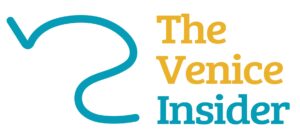
I am very interested in your Biennale Book.
Please let me know, when it is available (PDF oder Paperback)
Thanks and best regards –
Daniela
Hi Daniela,
So glad to hear that you are interested in it. I will inform you when the book is available. If you want to be amongst the first ones to know, I suggest you subscribe to my newsletter (in the right column of this page).
All the best
Katia